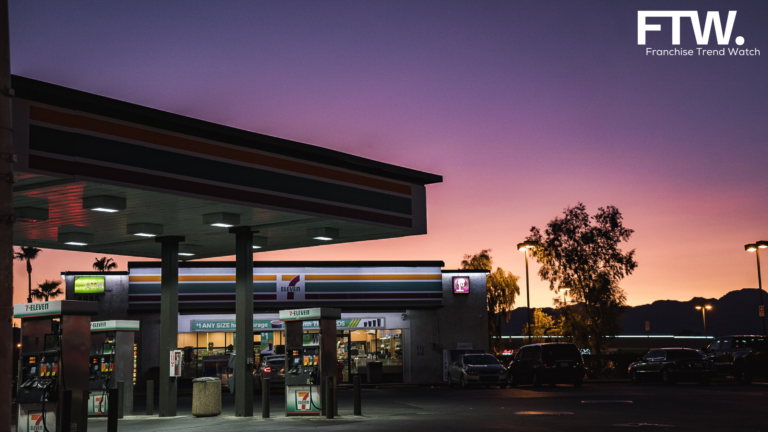Starbucks, the global coffeehouse giant, has captivated coffee lovers worldwide with its irresistible brews, inviting ambiance, and unwavering commitment to excellence. As a leading franchisor, Starbucks has not only revolutionized the coffee industry but also set benchmarks for franchise success.
In this comprehensive analysis, we’ll delve into Starbucks’ global footprint, scrutinize its franchise performance through key performance indicators (KPIs), dissect its strategic approaches to franchising, provide a financial overview for prospective franchisees, and speculate on future trends within the coffee industry.
Introduction to Starbucks’ Global Footprint
Since its inception in 1971 in Seattle, Washington, Starbucks has evolved from a single coffee shop to a global phenomenon, boasting over 31,000 stores in more than 80 countries. Starbucks’ franchising model has played a pivotal role in its rapid expansion, enabling the brand to penetrate diverse markets and establish a ubiquitous presence.
From bustling urban centers to remote corners of the globe, Starbucks’ distinctive green logo has become synonymous with quality coffee and unparalleled customer experience.
Analyzing Starbucks’ Franchise Performance
Starbucks’ franchise performance is underpinned by several key metrics that reflect its operational excellence and customer-centric approach:
1. Average Sales per Store
Starbucks consistently achieves impressive average sales per store, fueled by strong customer demand, premium pricing, and effective upselling strategies.
The brand’s loyal customer base and strategic location selection contribute to sustained revenue growth across its franchise network.
2. Customer Satisfaction Scores
Starbucks prioritizes customer satisfaction through personalized service, product quality, and store ambiance.
High customer satisfaction scores underscore the brand’s success in meeting and exceeding customer expectations, driving repeat business and brand loyalty.
3. Growth Metrics
Starbucks continues to expand its global footprint, with steady growth in store count and market share. The franchise’s ability to adapt to changing consumer preferences, enter new markets, and innovate its product offerings positions it for continued growth and success.
Strategic Insights from Starbucks’ Franchise Model
Starbucks’ franchise success is fueled by a combination of strategic initiatives aimed at enhancing the customer experience and driving sustainable growth:
1. Location Selection
Starbucks meticulously selects prime locations with high foot traffic, visibility, and accessibility to maximize sales potential and brand visibility. Strategic partnerships with landlords and developers enable Starbucks to secure premium real estate in key markets.
2. Store Design
Starbucks’ store design emphasizes comfort, functionality, and aesthetics, creating inviting spaces where customers can relax, socialize, and enjoy their favorite beverages.
The brand’s innovative store concepts, such as Reserve Roasteries and Starbucks Reserve Bars, cater to different customer preferences and elevate the coffeehouse experience.
3. Product Innovation
Starbucks continually innovates its product offerings to stay ahead of market trends and cater to evolving consumer tastes.
From seasonal beverage promotions to plant-based menu options and premium Reserve coffees, Starbucks’ commitment to innovation drives customer engagement and fosters brand loyalty.
4. Customer Experience Enhancements
Starbucks leverages technology to enhance the customer experience, offering mobile ordering, loyalty programs, and digital payment options.
Personalized marketing campaigns and social media engagement initiatives further strengthen customer relationships and drive brand advocacy.
Financial Overview of Starbucks Franchises
Prospective franchisees considering ownership of a Starbucks franchise should be aware of the financial requirements and potential returns associated with the investment:
1. Initial Investment Requirements
The initial investment for a Starbucks franchise varies depending on factors such as location, store size, and market conditions. Franchisees can expect to invest between $315,000 and $670,000, which includes franchise fees, equipment, and initial inventory.
2. Ongoing Fees
Starbucks franchisees are required to pay ongoing fees, including royalties and marketing fees, typically amounting to 6% of gross sales.
Additionally, franchisees are responsible for covering operating expenses, including rent, utilities, and employee wages.
3. Potential ROI for Franchisees
While owning a Starbucks franchise requires a significant upfront investment, the potential returns can be substantial. Successful franchisees can achieve strong profitability, with average annual revenues ranging from $800,000 to over $1 million per store.
Future Trends and Predictions
As the coffee industry continues to evolve, Starbucks is well-positioned to adapt to changing consumer preferences and market dynamics:
1. Sustainability Initiatives
Starbucks is committed to sustainability and environmental stewardship, with initiatives focused on ethically sourced coffee beans, waste reduction, and renewable energy.
Future trends are likely to prioritize eco-friendly practices and transparency in supply chains.
2. Digital Innovation
Technology will play an increasingly important role in shaping the future of the coffee industry, with advancements in mobile ordering, contactless payments, and personalized marketing.
Starbucks’ investments in digital innovation will enhance the customer experience and drive operational efficiency.
3. Health and Wellness
Consumer demand for healthier beverage options and plant-based alternatives is on the rise. Starbucks’ product innovation strategy will likely focus on offering nutritious and customizable menu items to cater to health-conscious consumers.
Brewing Success
Starbucks’ franchise analytics offer valuable insights into the brand’s unparalleled success and enduring appeal.
By analyzing key performance indicators, strategic initiatives, financial considerations, and future trends, prospective franchisees can gain a deeper understanding of the opportunities and challenges associated with owning a Starbucks franchise.
As Starbucks continues to innovate and adapt to changing market dynamics, the brand’s legacy as a global leader in the coffee industry is poised to endure, offering franchisees the potential for long-term success and profitability in the dynamic world of franchising.





